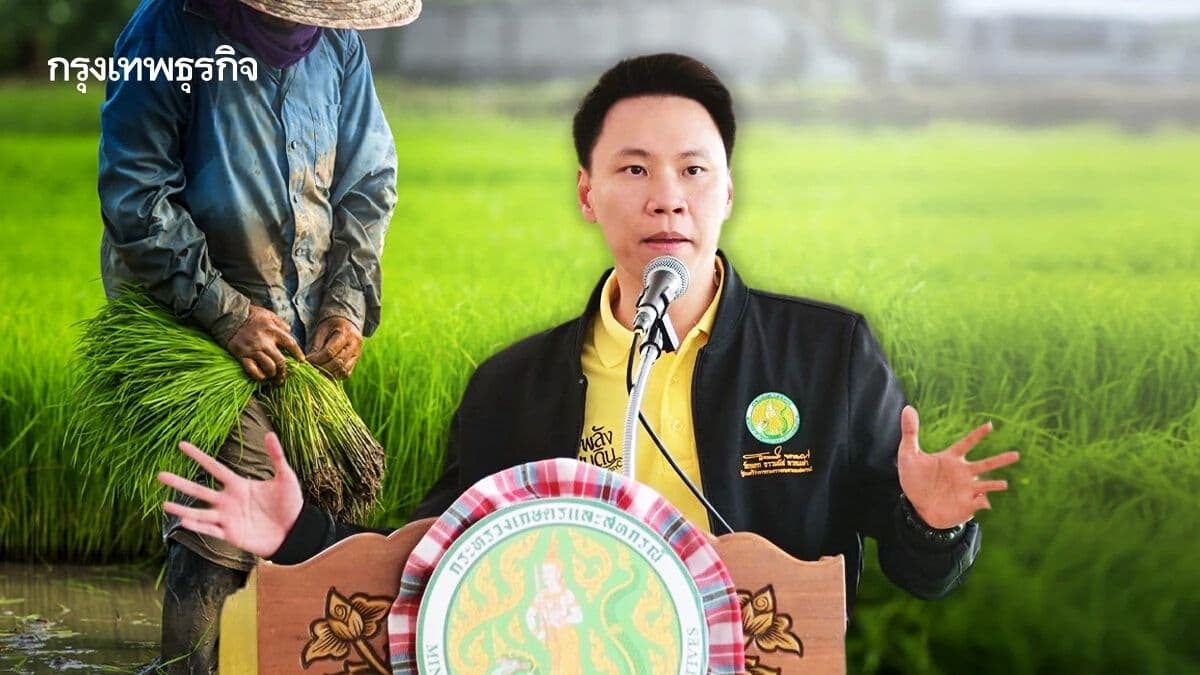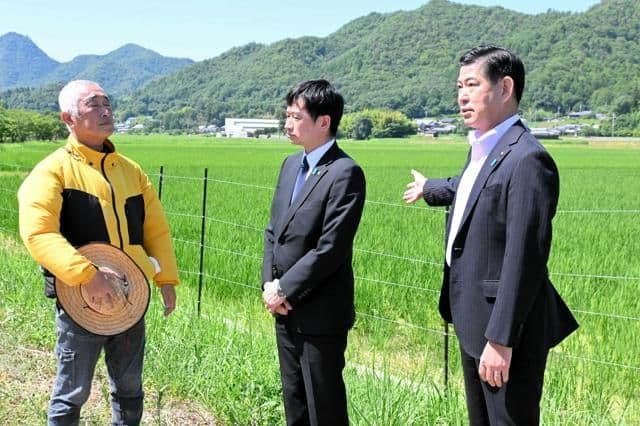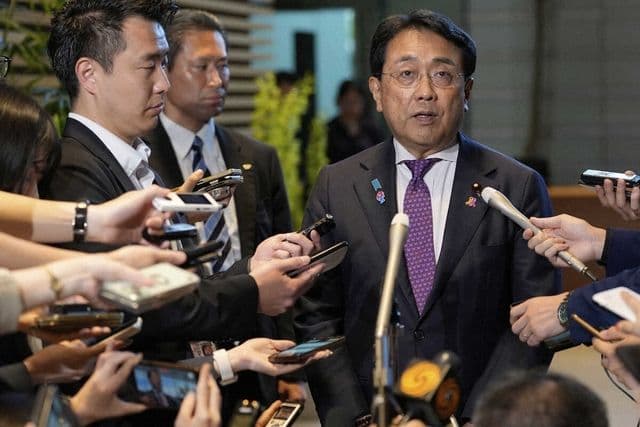The Unseen Hand in Japan's Rice Fields: Decoding Minister Suzuki's Market-Driven Agrifood Vision
Unpack Japan's agri-food shift under Minister Suzuki. We analyze his market-driven rice policy, focus on diverse consumer needs, and strategic reserve management amidst economic challenges.
A New Philosophy: Embracing Market Dynamics Over Direct Intervention
Japan's agricultural landscape, particularly its rice market, has long been characterized by a degree of government intervention aimed at ensuring stability for producers and consumers. However, Minister , upon taking office, signaled a notable departure from this traditional approach. In his inaugural press conference, Minister Suzuki unequivocally stated his intention not to "commit (intervene)" in rice prices, asserting that "prices should be determined by the market." This declaration marks a significant philosophical shift, moving away from direct governmental price controls or subsidies that could distort market signals. Historically, administrations, including the previous efforts by former Prime Minister and then-Agriculture Minister , have often resorted to measures like encouraging increased production or releasing government reserves during periods of price volatility, such as the recent 'Reiwa Rice Disturbance.' Minister Suzuki's stance, therefore, represents a bolder embrace of free-market principles, challenging the long-held perception of rice as a commodity requiring constant administrative guidance. This 'market-first' philosophy suggests a belief in the inherent efficiency of supply and demand to guide the sector, potentially fostering greater resilience and innovation among producers.
Cultivating Consumer Choice: Tailoring Production to Diverse Needs
Building upon his market-driven philosophy, Minister Suzuki articulated a vision for rice production that prioritizes diverse consumer needs over blanket volume targets. He emphasized that "production according to demand is the foremost principle," advocating for the creation of a production system capable of responding flexibly to varied preferences. This isn't merely about meeting a quantitative demand; it implies a qualitative shift, where farmers are incentivized to cultivate specific rice varieties, qualities, and quantities that cater to different market segments—be it high-end restaurants, processed food manufacturers, or burgeoning export markets. This contrasts with past policies that might have focused more on overall self-sufficiency or stabilizing a single, homogenous market. By stressing that policymaking "should think market-first," Minister Suzuki encourages producers to become more attuned to consumer trends, both domestically and internationally. This approach aims to foster a more dynamic and competitive agricultural sector, where innovation in product development and marketing becomes key, ultimately offering Japanese consumers a wider array of choices and potentially stimulating new growth avenues for farmers.
Addressing Inflation: The 'Okomeken' and Broader Economic Strategies
While firmly committed to market principles for rice pricing, Minister Suzuki is not oblivious to the real-world impact of economic pressures on Japanese households. Acknowledging the current climate of rising prices, he mentioned the necessity of considering economic measures, specifically citing " (rice coupons)" as a potential form of subsidy. This initiative highlights a nuanced approach: rather than directly interfering with the market mechanisms that determine rice prices, the government could offer targeted financial support to consumers. This strategy avoids distorting the market signals that producers rely on, while simultaneously alleviating the burden of increased food costs for families. Such a measure would serve as a consumer-side intervention, providing direct relief without reverting to the price controls or supply manipulation that his 'market-first' philosophy seeks to avoid. This thoughtful balance demonstrates a commitment to both economic principles and social welfare, ensuring that the transition to a more market-driven agricultural policy doesn't disproportionately impact vulnerable populations during inflationary periods.
Strategic Reserves: A Measured Approach to National Rice Supply
Minister Suzuki’s market-oriented stance extends to the management of Japan's strategic rice reserves. His policy on government stockpiles is pragmatic and explicitly tied to actual supply needs, stating that reserves "will be released when there's a shortage, but not if there's enough." This clarifies a more conservative and reactive role for government reserves, distinguishing it from previous interventions. During the recent 'Reiwa Rice Disturbance,' the had actively released government reserve rice to wholesalers and retailers, an action largely interpreted as an attempt to curb rising prices. Suzuki’s statement suggests a shift: reserves are primarily for addressing genuine supply deficits, not for influencing market prices or acting as a routine buffer against minor fluctuations. This measured approach reinforces the idea that the market, rather than government reserves, should be the primary mechanism for price discovery and supply-demand balancing under normal circumstances. It places greater responsibility on the private sector to manage inventory and respond to demand, while the government maintains a critical safety net for extraordinary situations.
From Paddy to Policy: Minister Suzuki's 'Field-First' Administrative Compass
Underpinning Minister Suzuki's entire agrifood vision is his overarching commitment to a "field-first sensibility" in agricultural, forestry, and fisheries administration. This isn't just a catchy phrase; it's the administrative compass guiding his policy decisions. It implies a deep understanding and responsiveness to the realities faced by farmers, fishermen, and foresters on the ground. This 'field-first' approach, when combined with his 'market-first' philosophy, suggests a strategy that empowers producers. Instead of dictating production quotas or price ceilings from , Suzuki aims to create an environment where those closest to the land—the farmers—can make informed decisions based on clear market signals and consumer feedback. This approach seeks to foster self-reliance, innovation, and direct responsiveness within the agricultural community. It's about moving beyond top-down mandates to a system where policy facilitates the industry's organic growth and adaptation to changing economic conditions, ultimately aiming for a more robust, sustainable, and internationally competitive Japanese agrifood sector.
Related Articles

Japan's Rice Crossroads: The Unending Quest for Balance in the Paddy Fields

Japan's Rice Crossroads: The Unending Quest for Balance in the Paddy Fields

Beyond the Baht: Navigating the Future of Thai Rice in a Shifting Landscape

Beyond the Baht: Navigating the Future of Thai Rice in a Shifting Landscape

The Rice Reconciliation: A Mayor's Journey from Apology to Advocacy

The Rice Reconciliation: A Mayor's Journey from Apology to Advocacy

Whispers of Discrepancy: Akazawa's High-Stakes Tariff Report Under the Microscope
